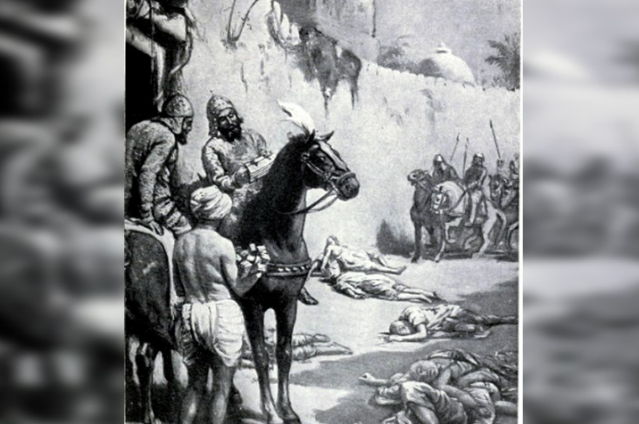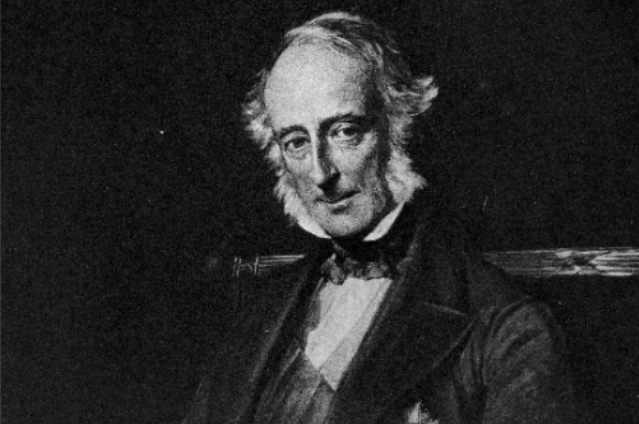ABSTRACT: The subcontinent has been home to two of the greatest universities of the Ancient World, Nalanda and Taxila. For over a millennium subjects as such philosophy, astronomy, ethics, mathematics, astrology, linguistics and grammar had birthed their greatest masters under the tutelage of teachers from Nalanda and Taxila. While Taxila served students from the northern part from India and students from the western world, Nalanda was home to students from southern and central parts of India as well as the students from the South- Eastern part of India as well. (modern-day Myanmar, China, South and North Korea, Tibet and Sri-Lanka). Located in Rajgriha and close to Patliputra, Nalanda became the central cog of the Indian educational system under the patronage of Guptas and the subsequent dynasties. Learning and education, in multiple disciplines flourished unhindered for a long time before it was brought to a sudden halt by Bakhtiyar Khilji and his troops. Approximately a millennium has passed since that dreadful act of violence and atrocity engulfed the university and Nalanda’s destruction has been a deep and gashing blow into the heart of Indian educational and spiritual heritage. In an age when education and development are at the fore-front of civilizational values one wonders if the landscape of the present Indian educational system have looked any different had Nalanda been spared the destruction that it received at the hands of its tormentor.

Artist's rendition of Bhaktiyar Khilji staring at the slain scholars
Image by wikipedia.org
The Rise and Fall of Nalanda
Decapitated, worm infested heads of clean shaven brahmins strewn around, miniscule particles of charred carbon flailing graciously in the soft wind, as the fire around the silent halls of the once sentient ‘Mahavihara’, breathed its last breath. Nalanda was silent, once and for all, never to be restored to its former glory. Its honor was ravaged, the libraries were razed, its keepers the brahmins and the monks murdered brutally in a systematic attempt to silent the voice of reason, knowledge and enlightenment, or so it appears.
Nalanda(427-1197CE) was a Buddhist monastic university and one of the great centers of learning in ancient Magadha. It was established during the Gupta age and multiple archeological and textual sources, including a seal of the Gupta King, and the travelogue written by Xuanzang (Mokshadev) link its establishment to Shakraditya.
It’s glorious history of disseminating invaluable knowledge spans over the course of 8 Centuries before it was razed to the ground by Turkic invaders, primarily Bakhtiyar Khilji in 1197. Bakhtiyar Khilji, when he set fire to the Great University and its vast and prolific library destroyed not only the university but also broke the solitary thread which connected India to its past. For the books and records he burnt, and the monks he beheaded were the keepers of India’s great heritage of the ‘Guru-Shishya Pratha.’
As that fire breathed it last breath and the flailing soot particles settled down, all the knowledge of culture, ethics, astronomy and mathematics that had been accumulated over eight long centuries, turned to smoke pervaded the atmosphere and then swiftly disappeared. All that was left was a precariously hung structure of bricks, and soot all over. The scared thread had been broken, and a chasm opened and swallowed India’s past. In the light of the fire set by Khilji, India’s spiritual self was reduced to an abysmal dark.

Image by wikipedia.org
India had a continuous line of educational institutions the ‘Gurukuls’ which are mentioned even in the ancient Indian epic, ‘The Ramayana’ and ‘The Mahabharata’. What made Nalanda particularly interesting was that it adopted the Gurukul mode of education and applied it to higher learning in that the students were provided with living facilities within the institution itself. Nalanda was arguably the first of its kind to provide living facilities to its students.
What we know of Nalanda and its stature as a university, stems primarily from Tibetean, Sri-Lankan, Chinese Korean and other South-East Asian, travelers who came to India and stayed and studied at Nalanda. These travelers took back books, manuscripts and other valuable pieces of information including translations of multiple books and knowledge of Buddhism, Jainism and other schools of Ancient Indian Philosophy. Xuanzang (Mokshadeva) ,the Chinese traveler to India, visited the Mahavihara in 637AD, and stayed there for two years. He received his education from the venerable teachers of the university including Shilabhadra, in whom he had found an incomparably competent teacher to instruct him in the art of ‘Yogachar’. On his return back to China he took back 637 Sanskrit texts and 150 relics in 520 cases. He even translated 74 texts on variegated disciplines himself. Faxian the famous Chinese traveller also visited the university during his travels around India. The third Chinese traveler who visited India in 673AD, and stayed at Nalanda for a duration of 10 Years was Yijing. His account, unlike his predecessors, who talked about religion, geography and cultural traditions of India among other things, are found lacking in Yijing’s. He talks specifically about the practice of Buddhism in India, its rules and customs as well as the religious rigors observed by the monks of the monastery. He also talks about the economic workings of Nalanda wherein he mentions that the revenue form 200 villages had been directed towards the universities' maintenance.
The Korean visits to Nalanda are fairly old, but have come to light only recently. After the Chinese the Koreans along with the small Island nation of Ceylon were probably the most frequent foreign visitors to Nalanda. That again arises from the fact that they were and have been to a certain degree primarily Buddhist cultures, and Buddhism has its roots in India. So, it’s only natural for these visitors to come to India seeking spiritual and religious guidance.
This long tradition of visitors coming to India because they perceived Nalanda to be a center of learning and education was brought to a drastic and rather dismal halt by the armies of the Ghurid dynasty in 1197, who burned, ravaged, murdered and looted and not only books, monks and material wealth, but they also butchered something that was integral to the Indian way of life. They stifled under their boots, education. The fire set to the books and manuscripts eventually died out as fires do, and it left in its wake ashes, ashes that are empty, worthless and fickle.
Relevance of the Nalanda in the Indian Historical Continuum:
The current Indian educational system owes much of its origins to TB Macaulay who rather perniciously said that,
“A single shelf of good European library was worth the whole native literature of India and Arabia.”
One wonders if Mr. Macaulay who had so callously derided the Indian education system, would he have said the same had he visited India between the 5th -10th CE when Nalanda was at the height of its powers. Would he have said the same had he seen the glorious halls of the ancient Mahavihara, and its huge library with centuries worth of documentation, and its great teachers and its glorious cultural heritage.

Sir Charles Wood (President of the Board of Control of The British East India Company
Image by wikipedia.org
- In another instance, but along the same line of enforcement of Western Educational System, was the Wood Dispatch of 1854, which was led by Sir Charles Wood, who sent a dispatch to Lord Dalhousie, suggesting that English as the medium of instruction, communication and education be foisted on India. He suggested that the English education would enhance the “moral character of the Indians”. This again helps us highlight the blatant racism, bias and inherent baseness, and Eurocentric view at the heart of this argument. How does one judge the surplus or lack thereof, of the moral character of an entire nation, and a diverse race of people is beyond me.
There is much we can learn from Nalanda and its destruction in that, an Institution which has stood the test of time, and carries within it the heart and soul of the Nation, its culture, its heritage and fosters its future, must be fiercely protected at all cost.
Would the current Indian educational landscape which is heavily influenced by Macaulay’s Minute (with certain nuanced altercations to keep up with the changing times of course) have looked any different if Nalanda was standing in 1835? These are questions one wonders. But I personally believe that if the soot, those particles of carbon, the ashes of Nalanda could somehow come animate, they would all in a unison, shout a resounding Yes!
Is there a middle Ground?
Nalanda University was burnt to the ground, the British went on to colonize India, there is no denying that. No matter how much we fret over history or try to offer alternative sugar-coated retellings, the reality stands undisturbed. But is there something of value, possibly a gold nugget to be found in its ashes. This is where things get interesting, because I think the answer lies in a detailed reading of Tagore and his ideas on Education. Tagore relied heavily on “naturalism” as a means of dictating the structure of the educational policy. He put it to practice in his educational establishment/ school called Shantiniketan as well. He offered a middle-ground to this seemingly modest but tedious question around education. Educational policy of a nation wields a whole lot of influence over the minds of the nation and consequently its future as well. Tagore felt that nature is best teacher and these ideas can again be traced back to Wordsworth’s idea of Nature worship. But I would like to point out that Tagore and Wordsworth, though they talked about nature, their line of thought was fundamentally different in that Wordsworth was a poet and applied it to his discipline whereas Tagore was an educationist and a political sophist.

Rabindranath Tagore
Image by wikipedia.org
Tagore in his poem writes:
"Where the mind is without fear
And the head is held high
Where knowledge is free
Where the world has not
been broken up into fragments
By narrow domestic walls…”
These lines are reflective of his ideas on the framework of educational policy, in that education should be free to all, and the lines also echo his sentiments about how education should not be limited by narrow domestic walls and dogmatic prejudices. He wrote on how he wanted the educational structure to provide a blend of Eastern and Western values, so that the students can be instilled with the best of both worlds. His proposition makes incredible sense once we consider the philosophical and historical worth of the education from Nalanda and the practical and pragmatic aspect which the modern western education offers. This framework fills the chasm which resulted from the fall of Nalanda, to a certain extent of course, and balances the practical side of education which is indispensable in the modern age. The balancing act he offers seems telling, sturdy and fulfilling.
